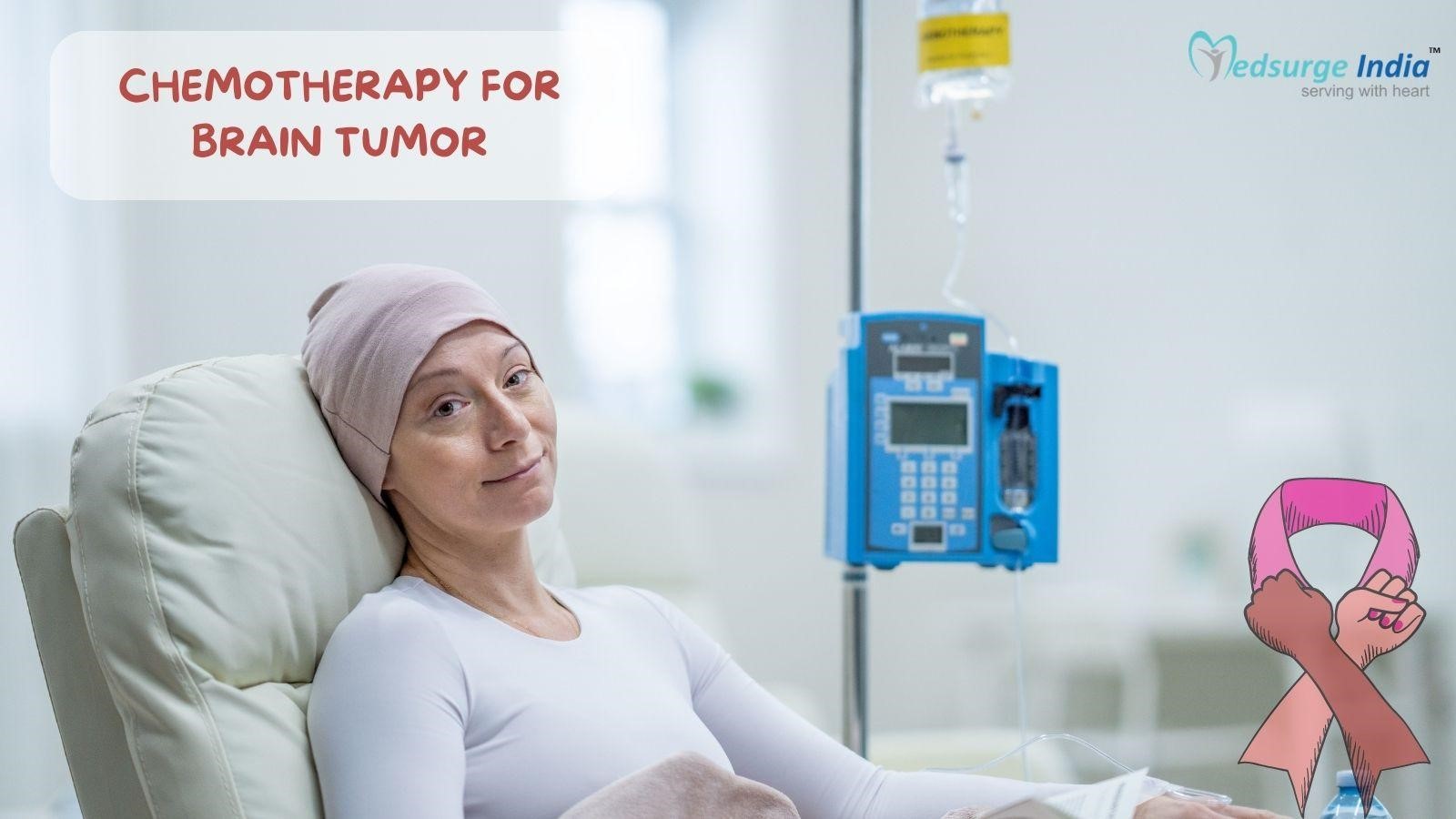HEALTH
Chemotherapy For Brain Tumor: How It Is Done?

Chemotherapy is a widely used treatment option for brain tumors, which are abnormal growths of cells in the brain. It involves the administration of drugs that kill or shrink cancer cells. This blog post aims to provide an overview of the procedure involved in chemotherapy for brain tumors.
What is Chemotherapy?
Chemotherapy is a method that is used for treating cancer using drugs to destroy cancer cells. Chemotherapy is generally used in combination with other treatments such as surgery or radiation therapy. It can be given orally or intravenously and may cause side effects such as hair loss and nausea. It is important to discuss the benefits and risks of chemotherapy with your doctor to determine if it is the right treatment for you.
How Is Chemotherapy Administered For Brain Tumors?
When it comes to chemotherapy for brain tumors, there are a few methods that can be used and administered depending on the specific type of tumor and the overall health of the patient.
- One common method is through an IV, which allows the medication to be delivered directly into the patient’s bloodstream.
- Another option is through a pill or capsule, which can be taken orally.
- In some cases, chemotherapy may also be delivered directly into the cerebrospinal fluid through a lumbar puncture or an Ommaya reservoir.
The best approach will depend on the individual case and should be determined by a qualified medical professional. It’s important to work closely with your healthcare team to ensure that you’re receiving the most appropriate and effective treatment for your specific situation. India is home to some of the best cancer treatment destinations in the world where for example Brain tumor surgery cost in India is much more affordable as compared with our nations which are known for treating brain tumors.
In addition to all that it has some of the Best Neurology Hospitals in India, where the nation boasts world-class medical facilities and cutting-edge equipment that meet and surpass global standards. Patients from all corners of the globe come to these facilities to receive top-of-the-line medical treatments and procedures.
Procedure
Before starting chemotherapy, a thorough evaluation of the patient’s condition is essential. This includes a complete medical history, physical examination, and various diagnostic tests such as imaging scans (CT scan, MRI) to determine the exact location and size of the tumor.
The treatment process for chemotherapy begins once the patient has been deemed suitable for chemotherapy. The procedure typically involves the following steps:
1. Drug Selection: Several chemotherapy drugs are available for the treatment of brain tumors. The choice of drug(s) depends on various factors such as the type and grade of the tumor, the patient’s overall health, and any previous treatments. The healthcare team, including oncologists and neurosurgeons, will determine the most appropriate drugs for the patient.
2. Administration: Chemotherapy for brain tumors can be given in different ways depending on the specific situation. The most common method is systemic chemotherapy, where the drugs are injected or infused into a vein (intravenous administration). This allows the drugs to circulate throughout the body and reach the brain. In some cases, chemotherapy drugs may also be administered orally in the form of pills or capsules. If you’re searching for an affordable option for chemotherapy, considering chemotherapy cost in India may be a wise decision.
3. Treatment Schedule: The frequency and duration of chemotherapy sessions vary depending on the individual patient and the specific drugs being used. Chemotherapy may be given in cycles, with a period of treatment followed by a rest period to allow the body to recover. Each cycle typically lasts for a few weeks, and the entire treatment course can span several months.
4. Monitoring and Side Effects: Throughout the chemotherapy process, patients will be closely monitored by their healthcare team. Regular blood tests and imaging scans are conducted to assess the tumor’s response to treatment. Chemotherapy can cause various side effects, such as fatigue, nausea, hair loss, and decreased blood cell counts. The healthcare team will provide supportive care and medications to manage these side effects.
5. Evaluation and Adjustment: After completing a course of chemotherapy, the patient’s response to treatment is evaluated. Additional imaging scans may be performed to assess the tumor’s size and any changes. If the tumor has responded well, further treatment options, such as surgery or radiation therapy, may be considered to maximize the chances of long-term remission.
Chemotherapy plays a vital role in the treatment of brain tumors. The procedure involves careful drug selection, administration, monitoring, and evaluation. While it may cause side effects, the benefits of chemotherapy in fighting brain tumors are significant. Patients undergoing chemotherapy for brain tumors should work closely with their healthcare team to ensure the best possible outcome and quality of life.
Side Effects of Chemotherapy For Brain Tumor
The type, quantity, and duration of medications you take as well as the course of your treatment all affect side effects. Because the medications kill rapidly dividing cells, they might also harm normally dividing healthy cells. Some of the most common side effects include:
- nausea and vomiting,
- hair loss,
- fatigue,
- mouth sores.
There can also be more serious side effects, such as an:
- increased risk of infection and bleeding,
- as well as damage to the heart,
- kidneys, and nerves.
It’s important to talk to your doctor about any concerns you have and to closely monitor your symptoms during treatment.
Kenneth is a proud native of sydney, born and raised there. However, he pursued his education abroad and studied in Australia. Kenneth has worked as a journalist for almost a decade, making valuable contributions to prominent publications such as Yahoo News and The Verge. Currently, he serves as a journalist for The Hear Up, where he focuses on covering climate and science news. You can reach Kenneth at [email protected].










